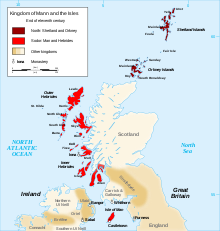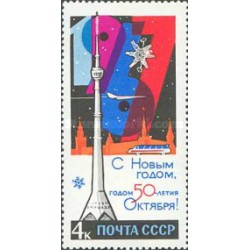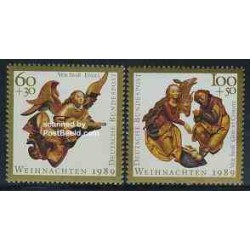- جدید
- ناموجود



توجه : جهت برخورداری از تخفیف سایت ثبت نام و با کد کاربری خود سفارش ثبت نمائید. زیرا تخفیف فقط برای اعضا در نظر گرفته شده و قابل رویت است.
توجه : درج کد پستی و شماره تلفن همراه و ثابت جهت ارسال مرسوله الزامیست .
توجه:حداقل ارزش بسته سفارش شده بدون هزینه پستی می بایست 100000 ریال باشد
جزیره مَن (به مانکس:Ellan vannin or mannin)، جزیرهای با جمعیت حدود ۸۵ هزار نفر واقع در دریای ایرلند است. رئیس دولت این کشور ملکه یا پادشاه انگلیس است ولی جزو بریتانیا نیست.
جزیره من یکی از جزایر نیمه خودمختار در دریای ایرلند است که از لحاظ جغرافیایی بین بریتانیا و ایرلند واقع شده است.
این جزیره دارای پارلمان و دولت محلی مستقل است، اما از بسیاری جهات از جمله سیاست خارجی وابسته به دولت بریتانیاست.
The Isle of Man (/ˈmæn/; Manx: Ellan Vannin [ˈɛlʲən ˈvanɪn][4]), otherwise known simply as Mann (Manx: Mannin, IPA: [ˈmanɪn]), is a self-governing British Crown dependency located in the Irish Sea between the islands of Great Britain and Ireland. The head of state is Queen Elizabeth II, who holds the title of Lord of Mann. The Lord of Mann is represented by a Lieutenant Governor, but its foreign relations and defence are the responsibility of the British Government.
The island has been inhabited by humans since before 6500 BC. As one of the six Celtic nations, Gaelic cultural influence began in the 5th century AD, and the Manx language, a branch of the Gaelic languages, gradually emerged. In 627, Edwin of Northumbria conquered the Isle of Man along with most of Mercia. In the 9th century, the Norse began to settle there. Norse people from Scotland then established the Kingdom of the Isles. The King's title would then carry the suffix, "and the Isles". Magnus III, the King of Norway, was also known as "King of Mann and the Isles" as part of the Hebrides civilization between 1099 and 1103.[5] A Norse-Gaelic culture arose and the island came under Norse control. In 1266, the island became part of Scotland, as formalised by the Treaty of Perth. After a period of alternating rule by the kings of Scotland and England, the island came under the feudal lordship of the English Crown in 1399. The lordship revested into the British Crown in 1765, but the island never became part of the Kingdom of Great Britain or its successor the United Kingdom, retaining its status as an internally self-governing Crown dependency.
The Manx name of the Isle of Man is Ellan Vannin: ellan is a Manx word meaning island, while Vannin is a mutation of Mannin, which may refer to Manannán mac Lir, see below. The earliest form of Man is Manu or Mana,[6] which appears in the genitive case as Vaninn, hence Ellan Vannin "Island of Man".
The name Mana/u is related to the figure of Celtic mythology known as Manannán mac Lir to the Irish and Manawydan to the Welsh.[7]
The name enters recorded history as Mona (Julius Caesar, 54 BC), and is also recorded as Monapia or Monabia (Pliny the Elder, AD 77), Monœda (Ptolemy, AD 150), Mevania or Mænavia (Orosius, AD 416), and Eubonia or Eumonia by Irish writers. Welsh records it as Manaw, and in the Sagas of Icelanders it is Mön.[8][9][10][11]
Though the Isle of Man was never incorporated into the Roman Empire, the island was noted in the Classics where it was called variously Monapia, Mοναοιδα (Monaoida), Mοναρινα (Monarina), Menavi and Mevania.[12] The Old Welsh and Old Irish names for the Isle of Man, Manau and Mano, also occur in Manaw Gododdin, the name for an ancient district in north Britain along the lower Firth of Forth.[13] The name is probably connected with the Welsh name of the island of Anglesey, Ynys Môn[14] and possibly with the Celtic root reflected in Welsh mynydd, Breton menez, and Scottish Gaelic monadh,[14] all of which mean "mountain" and probably derive from the Proto-Indo-European root *men-, "to tower".[15] In this case, such a name may have referred to the island apparently rising out of the Irish Sea on the horizon.[16]

Rising water levels cut the island off from the surrounding islands around 8000 BC. Evidence suggests that colonisation of the island took place by sea some time before 6500 BC.[17] The first residents lived in small huts, hunting, fishing and gathering their food. They used small tools made of flint or bone, examples of which have been found near the coast. Representatives of these artefacts are kept at the Manx Museum.[18]

The Neolithic Period marked the coming of knowledge of farming, better stone tools and pottery. It was during this period that megalithic monuments began to appear around the island. Examples from this period can be found at Cashtal yn Ard near Maughold, King Orry's Grave at Laxey, Meayll Circle near Cregneash, and Ballaharra Stones at St John's. This was not the only Neolithic culture: there were also the local Ronaldsway and Bann cultures.[19]
During the Bronze Age, the large communal tombs of the megalith builders were replaced with smaller burial mounds. Bodies were put in stone-lined graves along with ornamental containers. The Bronze Age burial mounds created long-lasting markers around the countryside.[20]
The Iron Age marked the beginning of Celtic cultural influence. Large hill forts appeared on hill summits, and smaller promontory forts along the coastal cliffs, while large timber-framed roundhouses were built. It is likely that the first Celts to inhabit the island were Britons speaking Common Brittonic.[citation needed] Around the 5th century AD, cultural influence from Ireland and migration precipitated a process of Gaelicisation evidenced by Ogham inscriptions, giving rise to the Manx language, which is a Goidelic language closely related to Irish and Scottish Gaelic.[21]
Viking settlement of the Isle of Man began at the end of the 8th century. The Vikings established Tynwald and introduced many land divisions that still exist.
in 1266 King Magnus VI of Norway ceded the islands, including Mann, to Scotland in the Treaty of Perth but Scotland's rule over Mann did not become firmly established until 1275, when the Manx suffered defeat in the decisive Battle of Ronaldsway, near Castletown.
In 1290 King Edward I of England sent Walter de Huntercombe to take possession of Mann, and it remained in English hands until 1313, when Robert Bruce took it after besieging Castle Rushen for five weeks. A confused period followed when Mann sometimes experienced English rule and sometimes Scottish, until 1346, when the Battle of Neville's Cross decided the long struggle between England and Scotland in England's favour.
English rule was delegated to a series of lords and magnates. The Tynwald passed laws concerning the government of the island in all respects and had control over its finances, but was subject to the approval of the Lord of Mann.
In 1866, the Isle of Man obtained a nominal measure of Home Rule.

The Isle of Man is located in the middle of the northern Irish Sea, almost equidistant from England, Northern Ireland, Scotland (closest), and Wales (furthest). It is 52 kilometres (32 mi) long and, at its widest point, 22 kilometres (14 mi) wide. It has an area of around 572 square kilometres (221 sq mi).[22] Besides the island of Mann itself, the political unit of the Isle of Man includes some nearby small islands: the seasonally inhabited Calf of Man,[23]Chicken Rock on which stands an unmanned lighthouse, St Patrick's Isle and St Michael's Isle. Both of the latter are connected to the mainland by permanent roads/causeways.
Hills in the north and south are separated by a central valley. The northern plain, by contrast, is relatively flat, consisting mainly of deposits from glacial advances from western Scotland during colder times. There are more recently deposited shingle beaches at the Point of Ayre. The island has one mountain higher than 600 metres (2,000 ft), Snaefell, with a height of 620 metres (2,034 ft).[22] According to an old saying, from the summit one can see six kingdoms: those of the Mann, Scotland, England, Ireland, Wales, and Heaven.[24][25][26] Some versions add a seventh kingdom, that of the Sea, or Neptune.[27][28]
At the 2011 census,[29] the Isle of Man was home to 84,497 people, of whom 27,938 resided in the island's capital, Douglas and 9,273 in the adjoining village of Onchan. The population rose 5.5% between the 2006 and 2011 censuses. By country of birth, those born in the Isle of Man were the largest group (48.1%), while those born in the United Kingdom were the next largest group at 42.2% (35.9% in England, 3.2% in Scotland, 2% in Northern Ireland and 1.1% in Wales), 1.9% in the Republic of Ireland and 0.2% in the Channel Islands. The remaining 7.5% were born elsewhere in the world, with 2.4% coming from EU countries (other than the UK and Ireland). The census also reported 1,823 people who claim a knowledge of the Manx language.
The Isle of Man Full Census, last held in 2011, has been a decennial occurrence since 1821, with interim censuses being introduced from 1966. It is separate from, but similar to, the Census in the United Kingdom.
The 2001 census was conducted by the Economic Affairs Division of the Isle of Man Treasury, under the authority of the Census Act 1929.
The Isle of Man has a temperate climate with cool summers and mild winters. Average rainfall is higher than that of the British Isles, because the Isle of Man is far enough from Ireland for the prevailing south-westerly winds to accumulate moisture. Average rainfall is highest at Snaefell, where it is around 1,900 millimetres (75 in) a year. At lower levels it can be around 800 millimetres (31 in) a year. Temperatures remain fairly cool with the recorded maximum being 28.9 °C (84.0 °F) at Ronaldsway on 12 July 1983.
تشکر نظر شما نمی تواند ارسال شود
گزارش کردن نظر
گزارش ارسال شد
گزارش شما نمی تواند ارسال شود
بررسی خود را بنویسید
نظر ارسال شد
نظر شما نمی تواند ارسال شود

check_circle
check_circle
















